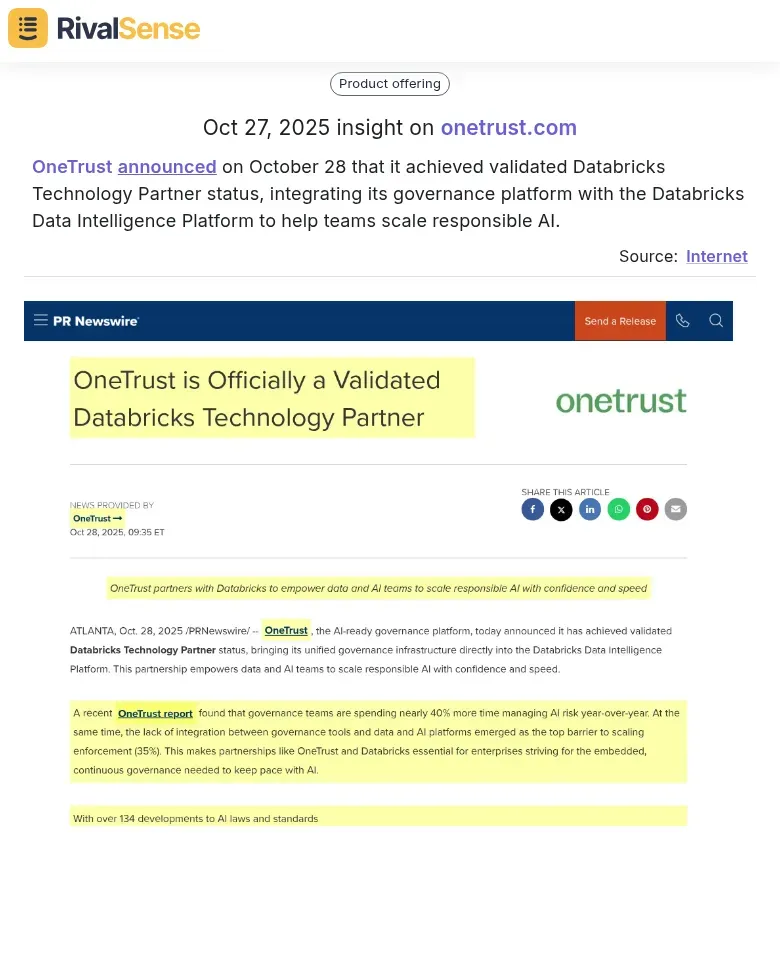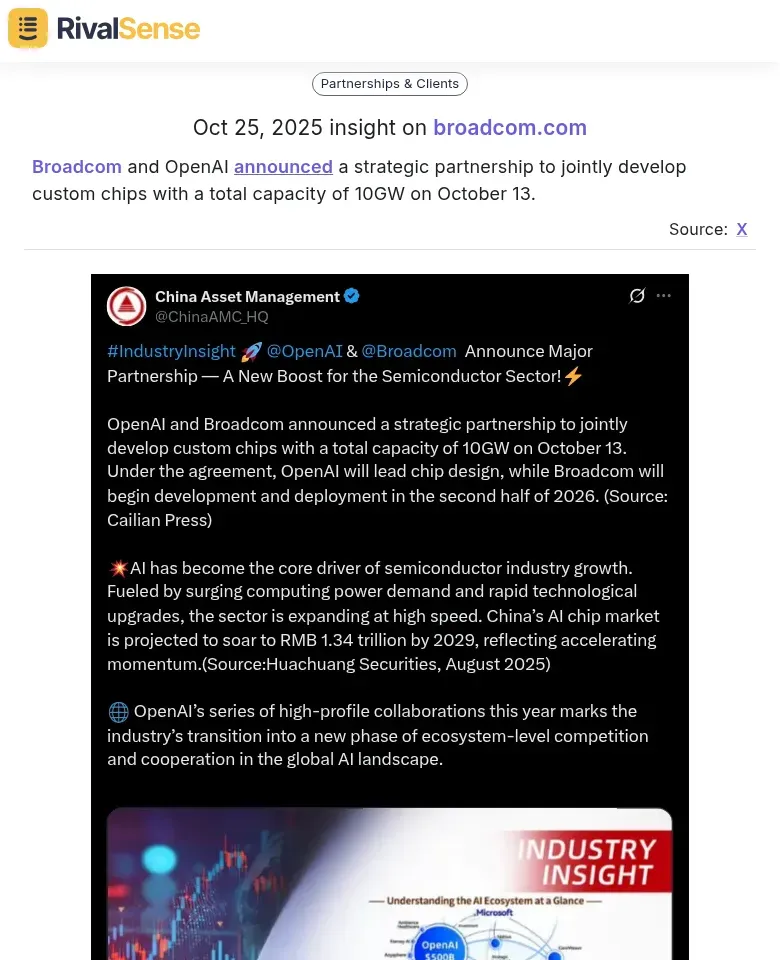How to Track and Benchmark Competitor Customer Satisfaction: A Strategic Guide
In today's hyper-competitive B2B landscape, understanding how your customers feel about your service is crucial—but knowing how they feel about your competitors' offerings can be the difference between market leadership and playing catch-up. While 75-85% customer satisfaction might seem acceptable for your business, what if your closest competitor is consistently hitting 90%? This comprehensive guide will show you how to effectively track, measure, and benchmark competitor customer satisfaction scores, giving you the competitive intelligence needed to outperform in your market.
Understanding Customer Satisfaction Score (CSAT) in Competitive Context
The Customer Satisfaction Score is a standard business metric that measures how satisfied customers are with a product, service, or business relationship. Companies typically ask customers to rate their satisfaction on a scale (1-5, 1-10, or through emojis), with the CSAT calculated as the percentage of positive responses. It's essential to grasp this metric not just for internal use but to contextualize it against rival performance.
The formula is straightforward:
CSAT = (Number of satisfied customers / Total responses) × 100
For example, if 40 out of 50 customers give top ratings, your CSAT is 80%.
Industry Benchmarks You Need to Know
According to the American Customer Satisfaction Index, CSAT scores vary significantly by industry. These benchmarks provide a starting point, but they don't tell the full story of your specific competitive arena. Here's a quick overview:
- SaaS/Software: 78-82%
- Professional Services: 75-80%
- E-commerce: 80-85%
- Financial Services: 76-81%
But here's what most businesses miss: these are averages. Your direct competitors might be performing well above or below these benchmarks, making personalized tracking vital.
Why Competitor CSAT Intelligence Matters
Gaining insights into competitor customer satisfaction isn't just about numbers—it's about uncovering strategic advantages. By understanding where rivals excel or fall short, you can make informed decisions to enhance your own offerings. This intelligence helps you stay ahead in a crowded market.
1. Identify Market Gaps
When competitors have low satisfaction in specific areas, it presents an opportunity for differentiation. If their customers complain about slow support response times, you can win by offering 24/7 instant support.
2. Predict Customer Churn Opportunities
Dissatisfied customers are 5x more likely to switch providers. Tracking competitor satisfaction drops helps you time your outreach and acquisition campaigns perfectly.
3. Benchmark Your Performance Accurately
Industry averages are helpful, but your real competition isn't the entire industry—it's the 3-5 companies your prospects are actually evaluating alongside you.
4. Leverage Competitor Partnerships for Early Signals
Monitoring competitor partnerships can reveal shifts in their strategy that may impact customer satisfaction. For instance, when OneTrust announced on October 28 that it achieved validated Databricks Technology Partner status, integrating its governance platform with the Databricks Data Intelligence Platform to help teams scale responsible AI, it signaled a focus on enhancing product capabilities.  Tracking such alliances is valuable because it provides early warnings of potential improvements in competitor offerings, allowing you to adapt your strategy proactively.
Tracking such alliances is valuable because it provides early warnings of potential improvements in competitor offerings, allowing you to adapt your strategy proactively.
Practical Framework: The Competitor CSAT Tracking System
Building a systematic approach to track competitor CSAT ensures you don't rely on guesswork. This framework breaks down the process into manageable steps, from identification to analysis. It's designed to be actionable and scalable for businesses of any size.
Step 1: Identify Your True Competitors
Start by listing:
- Direct competitors (same product, same market)
- Indirect competitors (different product, solving same problem)
- Aspirational competitors (where you want to be)
Step 2: Set Up Multi-Source Intelligence Gathering
Public Review Platforms:
- G2, Capterra, TrustRadius for B2B software
- Industry-specific review sites
- Google Reviews and social media mentions
Customer Feedback Signals:
- Support forum discussions
- Feature request patterns
- Churn reason analysis from win/loss interviews
Market Intelligence:
- Quarterly earnings calls (for public companies)
- Industry reports and surveys
- Customer conference presentations
- Strategic moves like partnerships, which can indicate efforts to boost satisfaction. For example, Broadcom and OpenAI announced a strategic partnership on October 13 to jointly develop custom chips with a total capacity of 10GW.
 This type of insight is valuable as it highlights innovation drives that could lead to enhanced product performance, affecting customer satisfaction and giving you a heads-up to refine your own R&D efforts.
This type of insight is valuable as it highlights innovation drives that could lead to enhanced product performance, affecting customer satisfaction and giving you a heads-up to refine your own R&D efforts.
Step 3: Create Your Competitive CSAT Dashboard
Essential Metrics to Track:
| Metric | Your Company | Competitor A | Competitor B | Market Leader |
|---|---|---|---|---|
| Overall CSAT | 82% | 78% | 85% | 91% |
| Support Satisfaction | 79% | 72% | 88% | 93% |
| Product Satisfaction | 85% | 83% | 82% | 89% |
| Onboarding Success | 81% | 80% | 84% | 92% |
| Renewal Intent | 77% | 74% | 86% | 94% |
Step 4: Analyze Satisfaction Drivers
Look for patterns in what drives satisfaction for each competitor:
- Response time expectations
- Feature completeness
- Pricing transparency
- Implementation complexity
- Customer success engagement
Advanced Tactics: Turning Competitor CSAT Data into Action
Once you have the data, the next step is to translate it into actionable strategies that drive growth. This involves deep analysis and proactive monitoring to stay ahead of market shifts. Implementing these tactics can help you capitalize on competitor weaknesses and reinforce your strengths.
The "Satisfaction Gap Analysis" Method
- Map competitor weaknesses to your strengths
- Identify universal pain points in your industry
- Spot emerging satisfaction trends before they become standard
- Track satisfaction momentum (improving vs. declining)
Practical Checklist for Weekly Monitoring
- [ ] Review new reviews on major platforms (G2, Capterra, etc.)
- [ ] Check competitor social media for customer complaints/praise
- [ ] Monitor competitor support forums for recurring issues
- [ ] Track competitor product updates and their reception
- [ ] Analyze competitor pricing changes and customer reactions
- [ ] Document management changes that might impact customer experience
- [ ] Review any new partnerships or integrations announced
Pro tip: Modern competitive intelligence tools like RivalSense can automate this entire process, tracking competitor activities across 80+ sources including websites, social media, and various registries, delivering insights in a weekly email report. This saves hours of manual research while ensuring you never miss critical satisfaction indicators.
Actionable Strategies Based on Competitor CSAT Intelligence
Translating insights into action is where the real value lies. Depending on whether you're trailing or leading in CSAT, you can deploy targeted strategies to improve your position. This section provides clear, step-by-step approaches to leverage your findings.
When Competitors Have Higher CSAT:
Immediate Actions:
- Conduct win/loss analysis with recent churned customers
- Implement quick wins in your weakest satisfaction areas
- Enhance your differentiation messaging
- Invest in customer success programs
Long-term Strategies:
- Redesign your onboarding process
- Upgrade your support infrastructure
- Develop features addressing unmet needs
- Build strategic partnerships to fill gaps
When You Lead in CSAT:
Capitalize on Your Advantage:
- Create comparison content highlighting satisfaction differences
- Leverage customer testimonials in sales conversations
- Build case studies around customer success stories
- Target competitors' dissatisfied customers with specific campaigns
Building Your Competitive Satisfaction Intelligence System
A robust system ensures continuous monitoring and improvement. It integrates data collection, analysis, and action into a cohesive process. This setup helps you stay agile and responsive to competitor moves.
Essential Components:
1. Data Collection Infrastructure
- Automated review monitoring
- Social listening tools
- Customer interview processes
- Competitive intelligence platforms
2. Analysis Framework
- Monthly satisfaction trend reports
- Quarterly competitive positioning reviews
- Annual strategic satisfaction planning
3. Action Protocols
- Satisfaction alert thresholds
- Response playbooks for different scenarios
- Cross-functional improvement teams
The 90-Day Implementation Plan
Days 1-30: Foundation
- Set up monitoring systems
- Establish baseline metrics
- Create initial competitive dashboard
Days 31-60: Intelligence Gathering
- Collect historical satisfaction data
- Identify key satisfaction drivers
- Map competitive strengths/weaknesses
Days 61-90: Strategic Action
- Launch targeted improvements
- Develop competitive messaging
- Implement ongoing monitoring processes
Measuring Success: KPIs for Competitive CSAT Tracking
To ensure your efforts are paying off, track key performance indicators that reflect your competitive standing. These metrics help you gauge progress and adjust strategies as needed. Regular assessment keeps your team aligned and focused on goals.
Primary Metrics:
- Relative CSAT Position: Your score vs. competitor average
- Satisfaction Gap Closure Rate: How fast you're catching leaders
- Competitive Win Rate: Deals won when competing directly
- Churn-to-Competitor Rate: Customers leaving for specific competitors
Leading Indicators:
- Review sentiment trends
- Support ticket patterns
- Feature request alignment
- Customer expansion rates
Common Pitfalls to Avoid
Even with a solid plan, it's easy to fall into traps that undermine your competitive intelligence efforts. Being aware of these common mistakes can help you steer clear and maintain an effective tracking system. Proactive avoidance ensures your data remains reliable and actionable.
-
Over-focusing on scores instead of drivers - Understanding why competitors have certain scores is more valuable than the scores themselves.
-
Ignoring indirect competitors - Sometimes your biggest satisfaction threat comes from alternative solutions.
-
Reactive instead of proactive monitoring - By the time a competitor's satisfaction improvement shows in annual reports, it's too late.
-
Siloed intelligence - Competitive satisfaction data should inform product, marketing, sales, and customer success teams.
The Future of Competitive Satisfaction Intelligence
As markets evolve, so do the methods for tracking competitor satisfaction. Emerging trends like AI-driven analytics and real-time data will shape how businesses gather insights. Staying ahead of these developments can give you a lasting edge.
In the future, expect more integration of automated tools that provide deeper, predictive insights. For example, monitoring community initiatives like Reddit's partnership with Grande Prêmio in Brazil to launch a community for motor sports discussions can reveal how competitors are boosting engagement and satisfaction.  This type of insight is valuable because it shows efforts to build loyal communities, which often correlate with higher customer retention and satisfaction, allowing you to anticipate market shifts.
This type of insight is valuable because it shows efforts to build loyal communities, which often correlate with higher customer retention and satisfaction, allowing you to anticipate market shifts.
Your Next Steps: Quick-Start Action Plan
Getting started doesn't have to be overwhelming. Break it down into manageable phases to build momentum and see results quickly. This action plan is designed for immediate implementation, even with limited resources.
-
This Week:
- Choose 3 top competitors to monitor
- Set up Google Alerts for "[competitor name] + review"
- Check their latest G2/Capterra ratings
-
This Month:
- Create your first competitive CSAT dashboard
- Analyze 10 recent competitor reviews for patterns
- Identify one satisfaction gap you can exploit
-
This Quarter:
- Implement systematic monitoring processes
- Launch one initiative based on competitive insights
- Measure impact on your own CSAT scores
Conclusion
In today's customer-centric business environment, satisfied customers drive growth, become brand advocates, and directly impact your bottom line. But satisfaction doesn't exist in a vacuum—it's always relative to alternatives available in the market.
By systematically tracking and benchmarking competitor customer satisfaction, you gain the intelligence needed to:
- Identify and exploit market opportunities
- Differentiate your offering effectively
- Predict and prevent customer churn
- Build sustainable competitive advantages
Remember: it takes roughly 12 positive experiences to overcome one negative one, but when you know exactly where competitors are failing their customers, you can design experiences that get it right from the start.
The businesses that win tomorrow will be those that not only measure their own customer satisfaction but understand it in the context of their competitive landscape. Start building your competitive satisfaction intelligence system today, and transform market insights into market leadership.
Ready to automate your competitive intelligence gathering? Try RivalSense for free to get your first competitor report today and start tracking competitor product launches, pricing updates, event participations, partnerships, and more across company websites, social media, and various registries. This weekly email report delivers actionable insights to help you stay ahead—don't wait, leverage this tool to tackle the challenges described in this post and boost your competitive edge!
📚 Read more
👉 Optimize Smart Building Integration with Key Account Tracking Apps
👉 How Talent Movement Insights Transformed Competitive Strategy Against inDrive
👉 LinkedIn Competitive Analysis: Unlock Key Account Growth Insights
👉 Mapping Competitor Moves: Transport Industry Productivity Tactics
👉 Competitor Financials & M&A Cheat Sheet: Track Hiring for Insights
